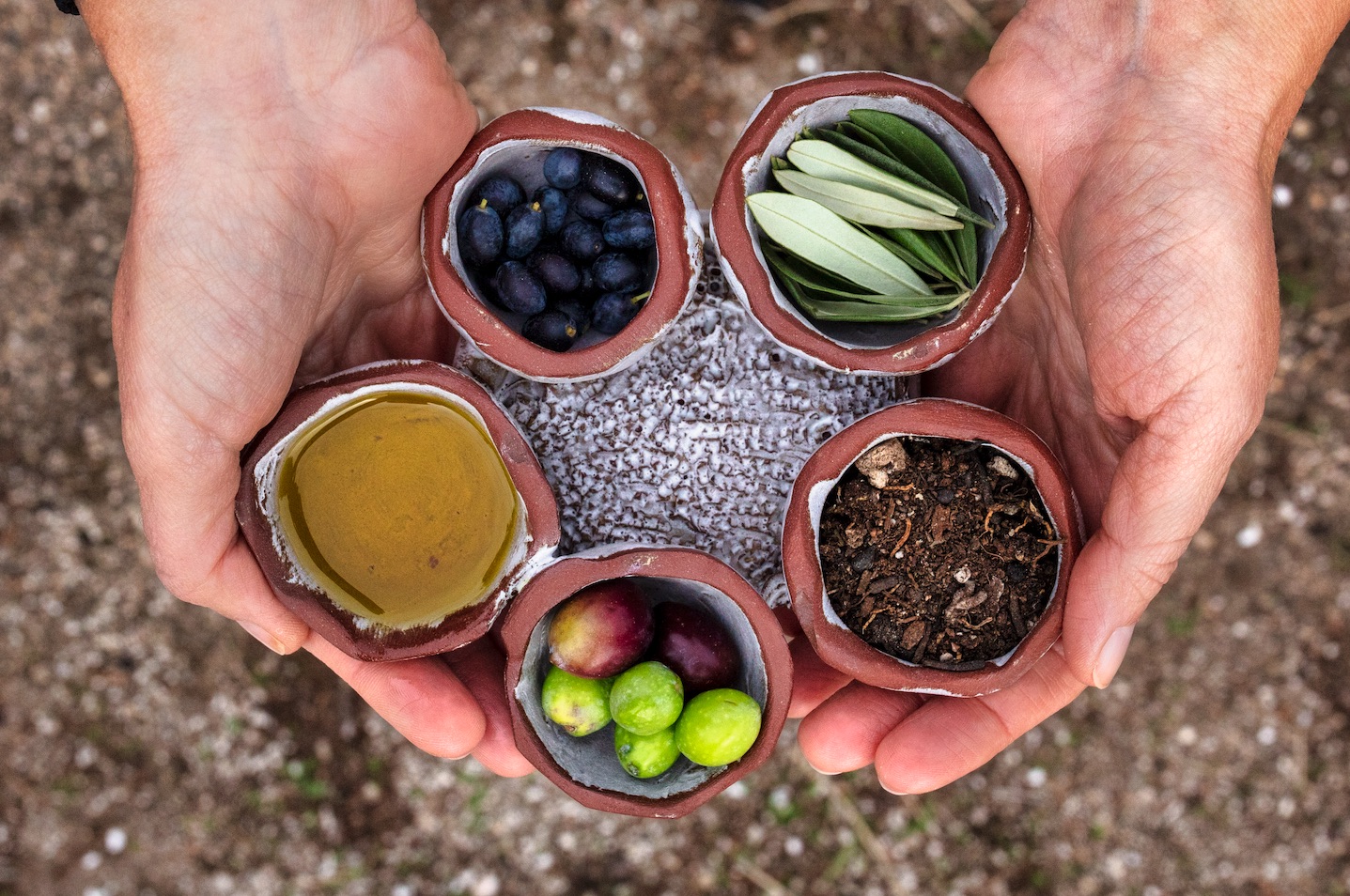A kernos is a ceramic vessel that ancient Greeks would use to celebrate their harvests. After my first encounter with one in Athens’ National Archaeological Museum a couple of years ago, I was fascinated by its unusual shape and the numerous little pockets in which people would place grains, wine, olive oil and anything else they felt the need to thank the earth for.

Ever since that visit, I wanted to make a kernos myself but kept postponing a task that seemed way above my pottery skills. Last summer, my neighborhood in Athens was hit by a wildfire that burnt down houses and threatened the community vegetable plots. Another wildfire that erupted in Crete a few days earlier burnt down all the olive trees in one of my best friends’ centuries-old grove.

Making a kernos suddenly became a way of dealing with grief and having the adequate skills did not matter anymore. I was almost desperate to create a peaky kernos — one that is out of balance and that bears the wounds of fire. One that is dismal and barely standing.
I worked on it for days, drawing from the image of the harmonious kernos I had seen in the museum, from my mental images of processions where women carry these majestic vessels as well as from the contemporary artwork of renowned ceramist Theodora Chorafas.

After the kernos was fired in the kiln, I filled it with green and black olives, silver olive leaves, first-press olive oil and soil.
These are the items that I feel the need to celebrate and express gratitude for:
- The olives that keep on growing despite the scarcity of rainfall and high winter temperatures overstressing the trees.
- Olive oil, because I think it is the top ingredient that gives character to Greek and Mediterranean food.
- Olive leaves are high in phenols and show that there still are natural resources we have not found a proper use for. And
- Soil, not so much for its undeniable importance for agriculture, but for the sheer pleasure of touching and smelling this soft, fertile powder that is, after all, the essence of existence.

Olive oil harvest in Greece extends throughout January. Over the next months, I will be traveling with my kernos to different parts of the country, and inviting olive oil producers to fill it with their own offerings. I will be taking pictures of them, writing down their stories and posting them on Instagram in what I hope is only the beginning of many years of documenting harvest gratitude.
















